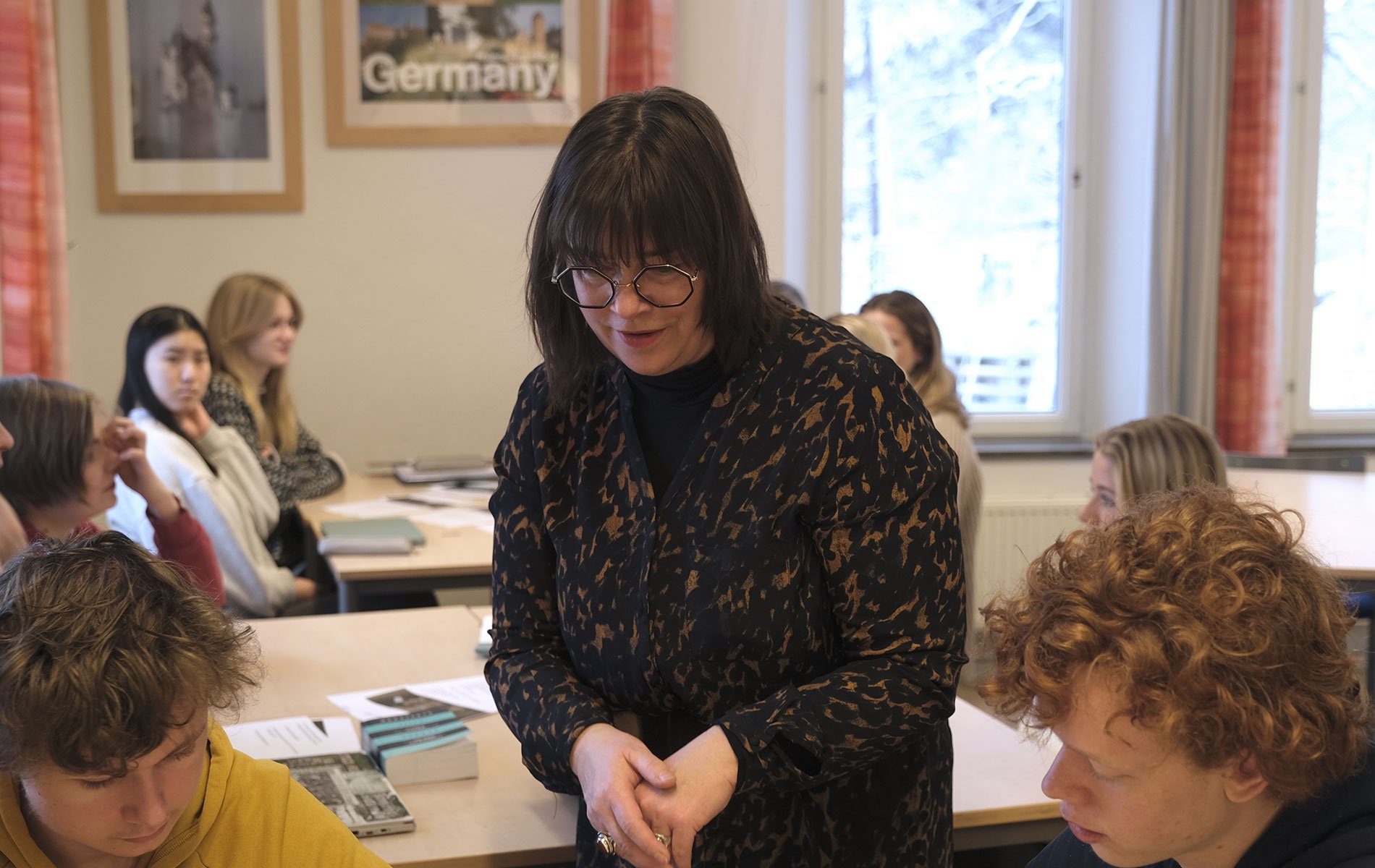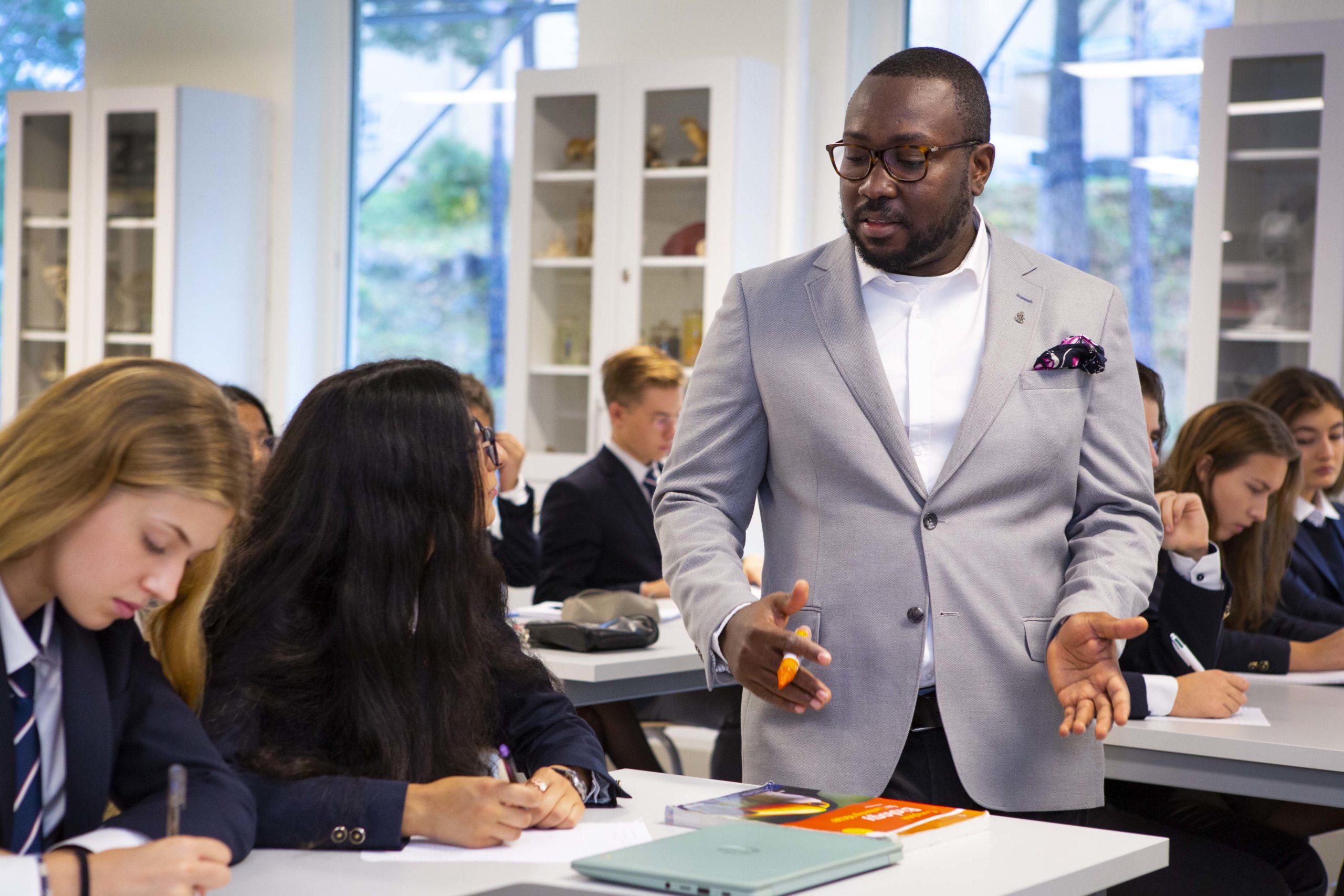This teaching method is revolutionising Swedish schools
The world is changing faster than ever now in 2022, and new teaching methods are needed in order to prepare children and young adults for the future. One of these teaching methods is 'active learning', a research-proven method that is motivating even the most passive and shy of students to take control of their own education.

Christina Peters is a languages teacher at Sigtunaskolan Humanistiska Läroverket (SSHL), a coeducational independent boarding school set in the countryside north of Stockholm, and a confirmed proponent of ‘active learning’ .
She sometimes even uses the school’s bucolic setting as a teaching tool. “Especially in spring, I like to send the students out into the grounds with their phones to take a picture of something that inspires them. A leaf or a flower perhaps.”
When the children return to the classroom Christina sets them short exercises. “They need to talk about the object in German.’Okay, what is it? Check in the dictionary for the correct word. Where did you find it? Why did you choose this to photograph? What colour is it?’ Then they will write a short text - or maybe even a poem - about the object to accompany the photo, and we’ll have a little exhibition about it so that others can see it, and maybe they can write something too in German.”
Enables shy students to engage more in lessons
Active learning is a teaching method that focuses on how the students learn, not just what they learn. The technique ensures students are actively engaged in learning and encourages more complex thought processes.
In essence, the student is almost seeing the subject they’re studying in 3D - they’re processing it as a whole rather than as a flat ‘you speak, I listen’ construct.
It has been proven that using active learning, which engages students through discussions, forums, problem solving, case studies, role plays and other interactive activities, results in improved academic performance compared to traditional lessons or lectures. Research shows that active learning stimulates more holistic thought processes and encourages shy students to engage more in lessons.
Learn more about the benefits of sending your child to a school which practices 'active learning'
Ejike Onwueme, a science teacher at SSHL, is a big fan of approaching subjects ‘in the round’, but he’s not such a big fan of using the outdoors to teach unless his students need to collect samples. He likes his students to be active in a different way.
“I like to see my students arguing passionately in the classroom,” he says. “I ask them to research the advantages and disadvantages of something like the use of stem cells. Should we continue to use them or not? I give them 20 minutes and then I ask them to debate. But I generally don’t let them argue for the side they believe in - I tell them which side of the debate to argue for. So that even if they, for instance, disagree with the use of stem cells, they have to argue for the use of stem cells. It's a wonderful way to get them to see all sides of an issue and it builds their confidence and critical thinking.”
Using personal history to inspire
Christina Peters regularly uses her own history to submerge her students in the German language but using a real-life context. “I often tell them about my own history growing up in the old East Germany,” she says. “When we discuss that, I bring in a box with objects from my past. Could be my East German ID card, for example or a report card from my teacher or even a flag. Then I ask a few students to work out what these objects are in German. Then they need to present this information, in German, to the other students. Then they will all discuss my cultural and historical background.”
Ejike believes the advantages of active learning are very obvious.
Learn more about how your child can benefit from attending a boarding school like SSHL
“Active learning is very child-centred because the students themselves have to participate in the process of their learning. They have to make the effort.”
You don't see bored students in class
Furthermore, in a “traditional” class, it's common for the same few students to always participate by asking or responding to questions. By contrast, a class that uses active learning activities provides all students in a class with the chance to think and engage with course materials and practice skills for learning and applying that knowledge. In short, active learning coaxes along shy students in a way that's just not possible in conventional classrooms.
Shy kids rarely want to stand up in front of a class, according to Ejike. "But active learning slowly builds confidence by getting shy students to work in very small groups, so they can still fully participate in the class."
But it’s also about engagement, says Ejike.
“With active learning you don’t see bored students in the classroom. You see the students being more mentally agile. You don't see sleepy students or students drifting off, because they’re so much more involved in their own teaching process.”
And the benefits don’t end there, according to Ejike. “Another great thing is that you don’t have to wait until the end of the year exams to assess what the students have learned. You see it now, right now in the classroom, right in front of you. Active learning makes assessment immediate and continuous!”
Active learning is just one of the many benefits of sending your child to SSHL. Learn more about the innovative school north of Stockholm - applications are open now.
This content was paid for by an advertiser and produced by The Local's Creative Studio.



Join the conversation in our comments section below. Share your own views and experience and if you have a question or suggestion for our journalists then email us at [email protected].
Please keep comments civil, constructive and on topic – and make sure to read our terms of use before getting involved.
Please log in here to leave a comment.